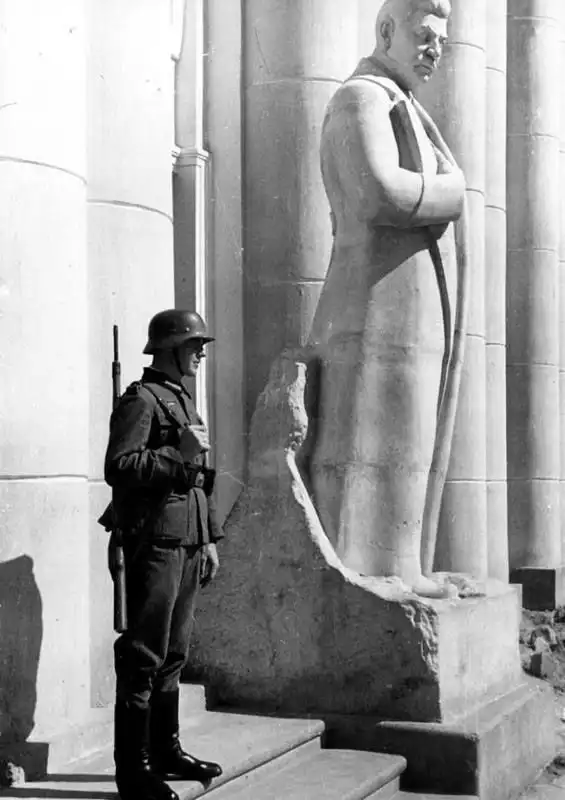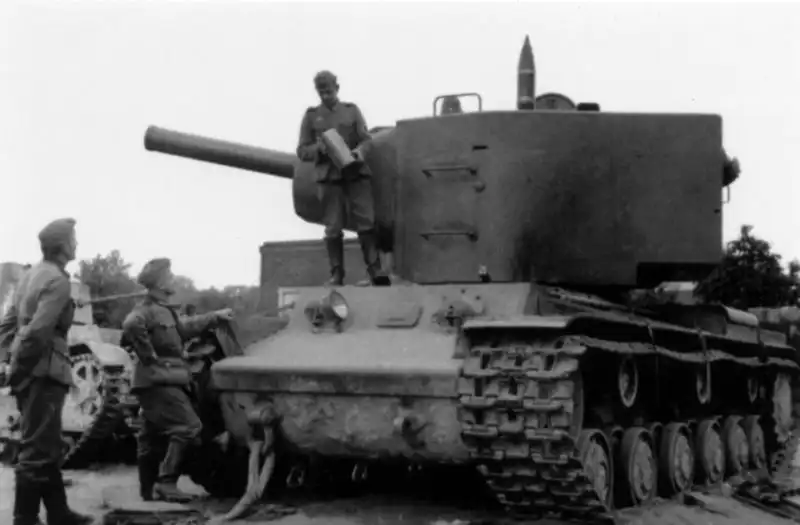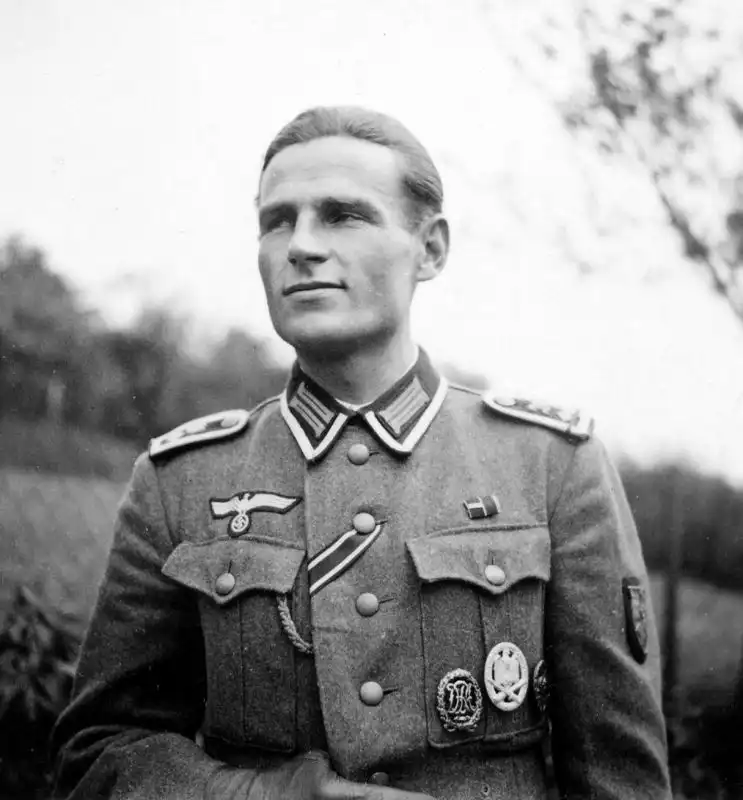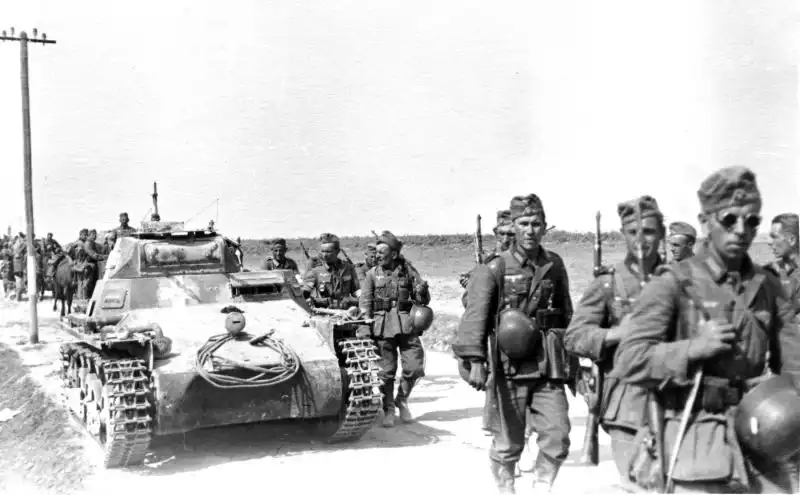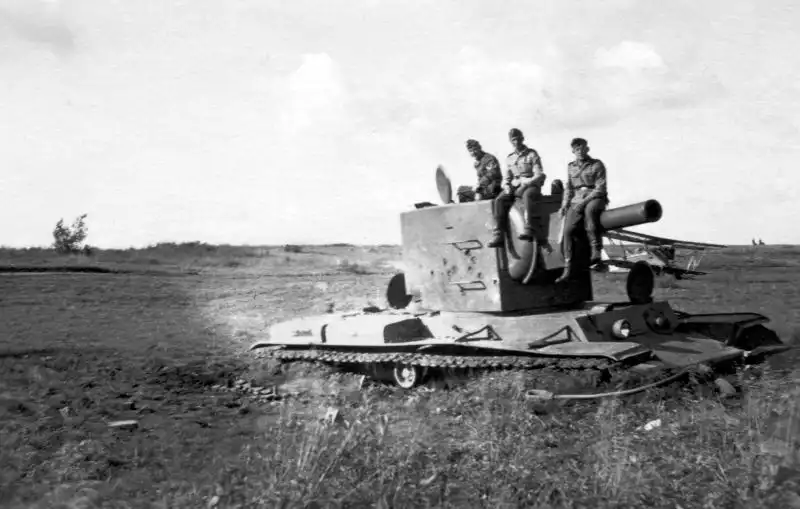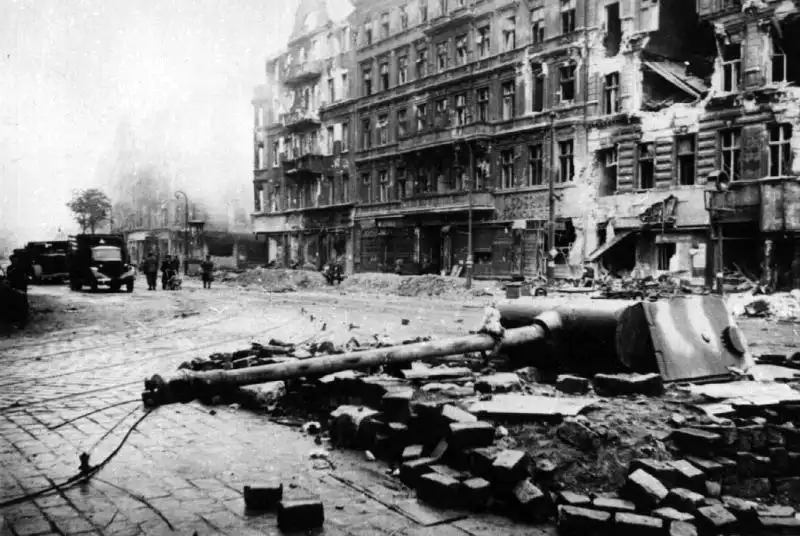Destroyed German StuG III and Fallen Crewman Near Roncey, France – 1944
June 24, 2025 - Reading time: 3 minutes
German StuG III Ausf. G destroyed in battle, likely by heavy Allied artillery. The body of a crewman lies beside the vehicle.
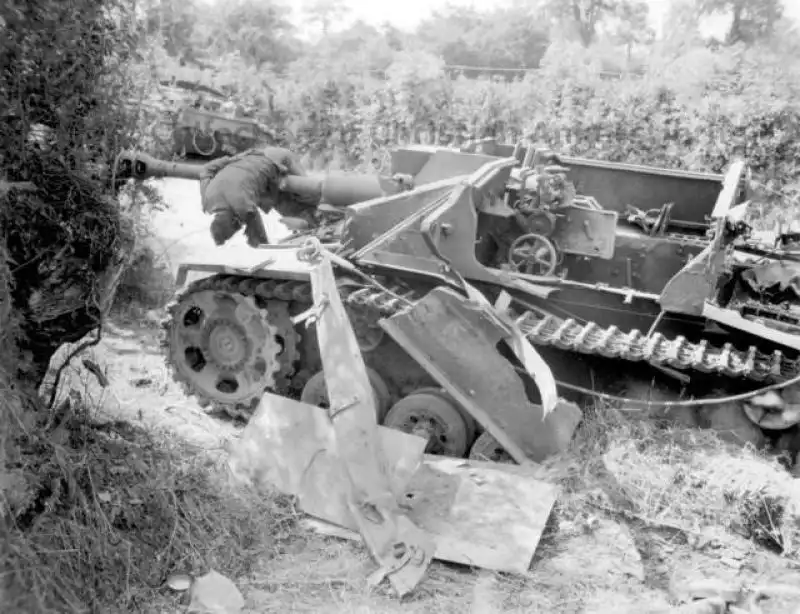
Roncey, Normandy. August 1944.
A once-formidable machine of the Wehrmacht — the StuG III Ausf. G — now lies torn apart on a French country road. Its armored shell is shattered, its silhouette ruined, and one of its gunners lies lifeless among the wreckage.
The StuG III, short for Sturmgeschütz III, was originally designed as an infantry support vehicle, but evolved into a deadly tank destroyer. By 1944, the Ausf. G variant was one of the most produced and feared self-propelled guns in the German arsenal.
But here, it met its end — possibly from a direct hit by Allied 155mm artillery or an internal ammunition explosion. The gaping holes in the armored casemate suggest catastrophic detonation. No chance for escape. No mercy from physics.
This haunting photo was taken during the aftermath of the Falaise Pocket, where the Allies encircled and decimated German forces retreating through Normandy. Roncey was one of many villages caught in the storm.
To the west of the wreck, liberation was advancing. To the east, retreat had turned into annihilation. For the man in the photo, the war ended here — in fire, steel, and silence.
📷 Technical photo data:
📸 Photographer: Unknown
📅 Date: August 1944
📍 Location: Roncey, Normandy, France
-
"destroyed StuG III WWII photos"
-
"Roncey France German tank wrecks 1944"
-
"StuG III crew casualties Normandy 1944"
Tags
Category
Search
Categories
- Unidentified WWII Photos (12)
- World War II Photos 1937 (1)
- World War II Photos 1938 (1)
- World War II Photos 1939 (3)
- World War II Photos 1940 (5)
- World War II Photos 1941 (95)
- World War II Photos 1942 (54)
- World War II Photos 1943 (48)
- World War II Photos 1944 (76)
- World War II Photos 1945 (40)
- WWII and Postwar Photos 1946 (1)
